The international marketplace presents a vast landscape of opportunities for businesses seeking to expand their reach. However, venturing into global trade necessitates understanding financial instruments designed to navigate its unique challenges.
Export finance is a cornerstone of successful international business, providing the liquidity and risk mitigation tools essential for navigating the terrain of cross-border transactions.
Definition of Export Finance
Export finance is a specialized financial service that supports businesses in their international trading endeavors. It provides the necessary funding and financial tools to facilitate the export of goods and services from one country to another.
This type of financing ensures that exporters have the working capital they need to produce and ship products while also offering protection against non-payment and other risks associated with international trade.
Key Components of Export Finance:
1. Trade Credit Insurance: Protects exporters from the risk of non-payment by foreign buyers.
2. Export Credit Agencies (ECAs): Government-backed institutions providing exporters financial assistance and insurance.
3.Letters of Credit are a guarantee from the buyer’s bank to pay the exporter upon receipt of specified documents.
4. Factoring and Forfaiting: Selling receivables to a third party at a discount to improve cash flow.
5. Working Capital Loans: Short-term loans to finance the production and shipment of goods.
6. Pre-shipment and Post-shipment Financing: Funding is provided before and after the shipment of goods to cover production and export-related costs.
The Purpose of Export Finance
Export finance is critical in facilitating international trade by providing businesses with the financial support to export goods and services. Here’s a closer look at the primary purposes of export finance:
1. Enabling International Trade: Export finance helps businesses overcome financial barriers to entering and expanding in global markets. Exporters can produce, ship, and sell their products overseas by providing the necessary funding.
2. Improving Cash Flow: Exporters often face long payment cycles when dealing with international customers. Export finance solutions like factoring and forfeiting allow businesses to convert receivables into immediate cash, improving liquidity and enabling them to reinvest in operations.
3. Enhancing Competitiveness: Export finance can help businesses offer attractive payment terms to foreign buyers, making their products more competitive globally. This can lead to increased sales and market share.
4. Supporting Economic Growth: Export finance contributes to economic growth by enabling more businesses to participate in international trade. It helps companies to expand their reach, create jobs, and stimulate economic activity in exporting and importing countries.
5. Facilitating Long-Term Planning: Export finance allows businesses to plan for long-term growth and expansion. With access to financial support, exporters can invest in new markets, research and development, and advanced production technologies.
In essence, export finance is a vital tool for businesses aiming to navigate the complexities of global trade. It provides the financial foundation to manage risks, maintain cash flow, and seize opportunities in the international marketplace, driving business success and economic development.
Importance of Export Finance in International Business and Liquidity Management
Export finance is critical in ensuring the smooth operation and continued growth of businesses venturing into the international arena. Notably, it offers significant advantages in the realm of liquidity management:
- Maintaining Cash Flow: Export finance safeguards your company’s working capital. It ensures the availability of funds to cover production costs, raw materials, and other essential expenses even before international buyers settle their invoices.
- Fueling Growth: Export finance empowers you to capitalize on new opportunities by mitigating cash flow constraints. You can confidently accept larger orders, explore uncharted markets, and invest in expanding production capacity—all without compromising your financial well-being.
In the subsequent sections, we will explore the advantages and types of export finance.
Also Read: Difference and Meaning of Freight and Cartage in Shipping and Logistics
Understanding the Advantages of Export Finance
Having established export finance as a cornerstone for international business success, let’s explore the tangible benefits it offers exporters venturing into the global marketplace.
- Immediate Liquidity and Working Capital: Export finance acts as a vital cash flow injection. It bridges the gap between production and eventual payment from overseas buyers, ensuring you have the necessary working capital to meet immediate financial obligations. This includes covering production costs, raw materials, and other expenses without disruption, even before international invoices are settled.
- Risk Mitigation for Delayed Payments and Defaults: The inherent risks associated with international trade, particularly delayed payments or buyer defaults, can be effectively mitigated through export finance. Specific instruments, like letters of credit, offer payment guarantees upon fulfilling your contractual obligations. Additionally, export credit insurance safeguards you against potential losses arising from buyer insolvency or political instability in the buyer’s country. This comprehensive risk management approach fosters a secure trading environment.
- Supporting the Growth of SMEs: Export finance is not solely reserved for large corporations. Many export finance solutions are specifically designed to cater to the needs of small and medium-sized enterprises (SMEs). Customized financing options tailored to their unique requirements empower SMEs to compete effectively in the international marketplace.
- Investing in Growth and Scaling Operations: By eliminating cash flow constraints, export finance empowers you to invest in your business’s future. You can confidently accept larger orders, explore new markets, and expand production capacity. This financial backing paves the way for sustainable growth and facilitates scaling your operations.
- Reduced Burden of Long Payment Terms: International transactions often involve extended payment terms, placing a significant financial burden on exporters. Export finance alleviates this pressure by providing immediate access to working capital. It allows you to manage your cash flow effectively, even with extended payment cycles from overseas buyers.
- Enhanced Visibility and Expansion Potential: Export finance fosters greater visibility into your cash flow. This improved financial clarity empowers you to make informed business decisions and strategically plan for future growth. With a secure financial foundation and the ability to manage cash flow effectively, you can confidently pursue expansion opportunities in the global marketplace.
In essence, export finance equips you with the financial tools and risk mitigation strategies necessary to navigate the complexities of international trade. It empowers you to seize new opportunities, invest in growth, and confidently navigate the global marketplace.
Also Read: Understanding the Role, Purpose, and Charges of Container Freight Station
Exploring the Types of Export Finance
Now that we’ve unveiled the compelling advantages of export finance let’s try to understand different types. This comprehensive toolbox equips you to address the specific financial needs at various stages of your international trade endeavors.
1. Pre-Shipment Finance: This form of export finance provides crucial financial support during the critical pre-shipment phase. It bridges the gap between securing an export order and the actual shipment of goods. Pre-shipment finance can cover various expenses, such as purchasing raw materials, financing production, and labor costs. This ensures a smooth production process and timely fulfillment of export orders.
2. Post-Shipment Finance: Having shipped your goods, the focus shifts to securing payment from your overseas buyer. Post-shipment finance offers working capital solutions to navigate this interim period. This can be particularly beneficial when dealing with extended payment terms international customers offer. Standard instruments include letters of credit and bills of exchange, which provide access to funds while awaiting final payment from the buyer.
3. Discounting of Letter of Credit: Letters of credit, while offering payment security, can tie up your capital for extended periods. Here’s where discounting a letter of credit comes in. You can leverage this option to receive immediate funds from a bank in exchange for the letter of credit minus a discount fee. This frees up your working capital and allows you to pursue new business opportunities.
4. Bill Discounting and Invoice Factoring: These financing options provide immediate access to funds against your unpaid export invoices. Bill discounting involves selling your invoices to a bank at a discount. In contrast, invoice factoring involves selling your invoices to a factoring company, which often assumes the credit risk associated with non-payment by the buyer. Both options provide a much-needed cash flow injection to support your ongoing operations.
5. Finance Against Collection of Bills: This financing solution allows you to access a portion of the value of your export bills receivable even before your overseas buyer settles the total amount. The bank advances you a percentage of the invoice value, typically around 70-80%, while holding the remaining amount until the buyer settles the invoice.
6. Finance Against Allowances and Subsidies: Governments often offer various incentives to promote exports. Export finance can leverage these allowances and subsidies. This can involve obtaining financing against receivables from government agencies or utilizing export credit insurance backed by government guarantees.
By understanding the distinct functionalities of these various export finance instruments, you can tailor your financing strategy to address the specific needs of your international business endeavors. In the concluding section, we will explore the crucial factors to consider when selecting the most suitable export finance option for your unique circumstances.
Understanding the Nuances of Documentary Trade Finance
Having explored the diverse instruments within the export finance arsenal, let’s explore documentary trade finance—a cornerstone for mitigating risk and ensuring secure transactions in the international marketplace.
Documentary trade finance involves exchanging critical documents between exporters and importers, facilitated by their respective banks. This approach fosters trust and safeguards both parties throughout the export process.
1. Documentary Credits: Guaranteeing Payment Security
Documentary credits, often called letters of credit (LCs), are the most secure form of documentary trade finance. They function as a binding promise by the importer’s bank to pay the exporter a predetermined amount upon fulfilling specific conditions outlined in the documentary credit.
These conditions typically involve presenting a set of documents that verify the shipment of goods according to the agreed-upon terms of the sale contract. Documentary credits can also encompass bank undertakings, similar to LCs but offering a more comprehensive range of guarantees beyond just payment.
2. Documentary Collections: Streamlining Transactions
Documentary collections (DCs) offer a more streamlined approach to documentary trade finance than LCs.
Here, the exporter entrusts their bank, the remitting bank, to collect payment from the importer. The remitting bank then forwards a collection instruction and a set of trade documents to the importer’s bank, the collecting bank.
There are two primary variations of documentary collections:
- Documents Against Payment (D/P): Under D/P terms, the importer must pay for the goods before they are released from the control of the exporter’s bank. This option is typically recommended for established trade relationships with creditworthy buyers.
- Documents Against Acceptance (D/A): With D/A terms, the importer takes possession of the goods upon accepting a draft (bill of exchange) that outlines the payment terms. The importer has a predetermined timeframe for settling the payment with the collecting bank. This option offers the importer a degree of credit but carries a higher risk of non-payment for the exporter.
The choice between documentary credits and documentary collections hinges on several factors, including the level of trust between the trading partners, the creditworthiness of the importer, and the value of the transaction.
Understanding the distinct functionalities of documentary credits and collections allows you to select the most appropriate documentary trade finance solution to safeguard international trade transactions.
In the final section, we will explore the supply-chain finance option for your business.
Also Read: What is Detention? Top Strategies and Tips to Avoid Detention Fees in Your Cross-Border Shipments
Exploring Supply Chain Finance
Having equipped you with the knowledge of traditional export finance instruments and documentary trade finance solutions, let’s venture into supply chain finance (SCF).
This innovative approach extends the benefits of financial support beyond the immediate exporter-importer relationship, encompassing the entire supply chain ecosystem.
1. Loan or Advance-Based Solutions: Optimizing Cash Flow
SCF offers a variety of loan or advance-based solutions designed to optimize cash flow for businesses throughout the supply chain.
Here are two prominent options:
- Receivables Finance: This financing solution allows exporters to access immediate funds against their outstanding export invoices. This injects much-needed working capital into their operations while they await payment from overseas buyers.
- Inventory Finance: Inventory finance provides businesses with the capital required to purchase raw materials, finance production processes, and manage inventory levels. This ensures a smooth flow of goods throughout the supply chain and avoids stockouts that could disrupt production or fulfillment.
2. Receivables Purchase: Transforming Receivables into Immediate Cash
SCF also encompasses solutions focused on the outright purchase of receivables. These options offer immediate access to cash for exporters:
- Forfaiting: Under forfeiting arrangements, a specialized financial institution purchases the exporter’s medium- to long-term receivables at a discounted rate. This eliminates the risks associated with delayed payments or potential defaults by overseas buyers.
- Factoring: Similar to forfeiting, factoring involves selling your export invoices to a factoring company at a discount. However, unlike forfeiting, factoring companies may also assume the credit risk associated with the buyer’s non-payment.
- Discounting: This approach allows exporters to receive immediate funds from a bank in exchange for their export bills receivable, minus a discount fee. This frees up working capital for exporters and allows them to pursue new business opportunities.
3. Advanced Payment Bond or Guarantee: Building Trust and Confidence
For situations where an importer requires an advance payment from the exporter before production commences, SCF offers security solutions:
- Advanced Payment Bond: This financial instrument issued by a bank guarantees the return of the advance payment to the importer if the exporter fails to fulfill their contractual obligations. This fosters trust and enables importers to secure goods in advance, potentially at favorable pricing.
4. Payables Finance: Empowering Suppliers
SCF isn’t solely focused on exporters. It also offers solutions for suppliers within the international trade ecosystem:
- Payables Finance: This financing arrangement allows buyers to extend longer payment terms to their suppliers without impacting their cash flow. The supplier receives early payment from a financial institution, while the buyer benefits from extended credit terms. This fosters a win-win situation for both parties within the supply chain.
By understanding the diverse functionalities of these SCF solutions, you can leverage them to optimize cash flow, manage risk, and strengthen relationships throughout your international supply chain.
The following section will guide you through the risks and considerations in exporting finance or SCF options for your business needs.
Risks and Considerations in Export Finance
Having explored the vast array of export finance and supply chain finance solutions at your disposal, it’s crucial to acknowledge the inherent risks associated with these financial instruments. By proactively navigating these potential challenges, you can ensure a smooth and successful international trade journey.
1. Understanding Service Fees
Export finance and SCF solutions are not without their costs. Here are some essential service fees to consider:
- Interest Rates: Financing options naturally come with interest charges. Carefully evaluate the interest rates associated with different export finance products and compare them to your profit margins.
- Transaction Fees: Banks and financial institutions may levy transaction fees for processing export finance transactions, such as issuing letters of credit or discounting bills of exchange. Negotiate these fees whenever possible to optimize your financial terms.
- Discount Rates: Forfaiting, factoring, and bill discounting involve selling your receivables at a discount. Understanding the discount rates associated with these options is essential to ensure you receive a fair return on your export sales.
You can secure your business’s most cost-effective export finance solutions by meticulously evaluating service fees and comparing them across different providers.
2. Managing Late Payments and Defaults
Late payments and defaults from overseas buyers pose a significant risk in international trade. Here’s how to navigate these challenges:
- Credit Risk Assessment: Thoroughly assess potential buyers’ creditworthiness before entering export agreements. Use credit reports, industry insights, and government resources to evaluate their financial standing and payment history.
- Selecting the Right Payment Terms: Negotiate clear and concise payment terms in your export contracts. Consider offering early payment discounts to incentivize prompt payment from buyers. Explore secure payment methods like letters of credit to minimize non-payment risk.
- Export Credit Insurance: This valuable risk management tool safeguards you against financial losses arising from buyer insolvency or political instability in the buyer’s country. Consider investing in export credit insurance to protect your business from unforeseen circumstances.
By implementing these strategies, you can significantly reduce the risk of late payments and defaults, ensuring a more secure and predictable cash flow for your international business endeavors.
3. Minimizing the Impact of Exchange Rate Fluctuations
Fluctuations in currency exchange rates can significantly impact your profitability in international trade. Here are some strategies to mitigate this risk:
- Currency Forward Contracts: These financial instruments allow you to lock in an exchange rate today for a future payment. This protects you from adverse currency fluctuations between agreeing on a sale and receiving payment.
- Currency Options Contracts: Currency options provide the right, but not the obligation, to buy or sell a specific currency at a predetermined exchange rate on a future date. This offers more flexibility in managing your foreign exchange exposure than forward contracts.
- Invoicing in Your Home Currency: Consider invoicing your international buyers in your home currency whenever possible. This reduces your exposure to exchange rate fluctuations and ensures a more predictable income stream for your business.
By understanding and implementing these strategies, you can minimize the financial risks associated with currency exchange rate fluctuations, safeguard your profit margins, and ensure the long-term success of your international trade ventures.
In the final section, we will guide you through selecting the most suitable export finance or SCF option for your business needs.
Also Read: Freight Forwarding Companies in Jaipur
Understanding Export Finance: Accessibility and Eligibility
Now that you comprehensively understand export finance instruments, risks, and mitigation strategies, let’s explore how to access these valuable financial tools.
1. Criteria and Application Process for Exporters
The specific criteria and application process for export finance can vary depending on the type of financing you seek and the provider you choose. However, here’s a general outline to guide you:
- Eligibility Requirements: Most export finance providers will have specific eligibility criteria for exporters. These may include factors like your business experience, financial stability, export history, and the nature of your goods or services.
- Documentation Preparation: Be prepared to gather and submit various documents as part of your application, such as financial statements, business plans, export contracts, and pro forma invoices.
- Application Review and Approval: Once you submit your application, the export finance provider will assess your eligibility, the viability of your export venture, and the associated risks. The approval process can take anywhere from a few days to several weeks.
2. A Diverse Landscape of Providers: Banks, NBFCs, and Alternative Lenders
The export finance landscape offers a variety of providers catering to different business needs:
- Banks: Traditional banks are a primary source of export finance, offering a wide range of products like pre- and post-shipment finance, letters of credit, and bill discounting. However, qualifying for bank financing may be more challenging for smaller businesses or those with limited export experience.
- Non-Banking Financial Companies (NBFCs): These institutions provide an alternative source of export finance, often with more flexible eligibility requirements than banks. NBFCs can be a good option for smaller businesses or those seeking specialized financing.
- Alternative Lenders: The rise of fintech has introduced a new breed of alternative lenders offering innovative export finance solutions. These lenders may focus on specific industries or cater to businesses with unique financing needs.
Carefully research and compare the offerings of different providers to find the best fit for your specific business requirements.
3. Considerations for Eligibility: Strengthening Your Application
While eligibility criteria can vary, here are some factors that can strengthen your application for export finance:
- Demonstrated Financial Strength: A strong financial track record, including a healthy balance sheet and positive cash flow, will inspire confidence in potential lenders.
- Export Experience: A history of successful international trade demonstrates your expertise in navigating the complexities of exporting.
- Clear Business Plan: A well-defined business plan outlining your export strategy, target markets, and financial projections showcases your commitment and preparedness.
- Strong Customer Relationships: Demonstrating established relationships with reliable overseas buyers can bolster your creditworthiness in the eyes of lenders.
Understanding these eligibility considerations and presenting a solid application can increase your chances of securing the export finance solutions that propel your international business aspirations.
Conclusion
Navigating export finance and international shipping can be complex, but Intoglo makes it simple and cost-effective. Our door-to-door FCL shipments eliminate third parties, ensuring a seamless and efficient process. With 24/7 support, you can count on us to be there whenever you need us.Choose Intoglo for hassle-free shipping solutions. Contact us today to experience the Intoglo advantage and take your international business to new heights.


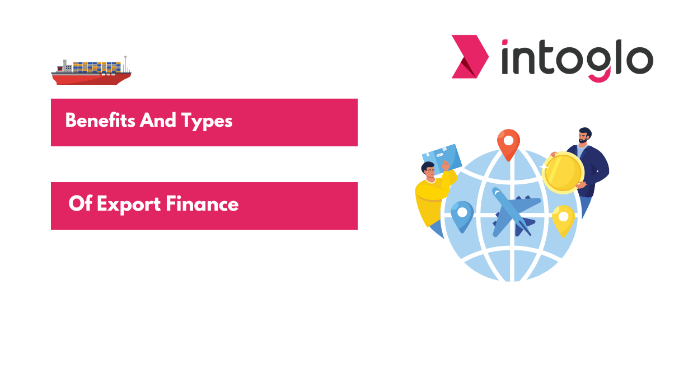


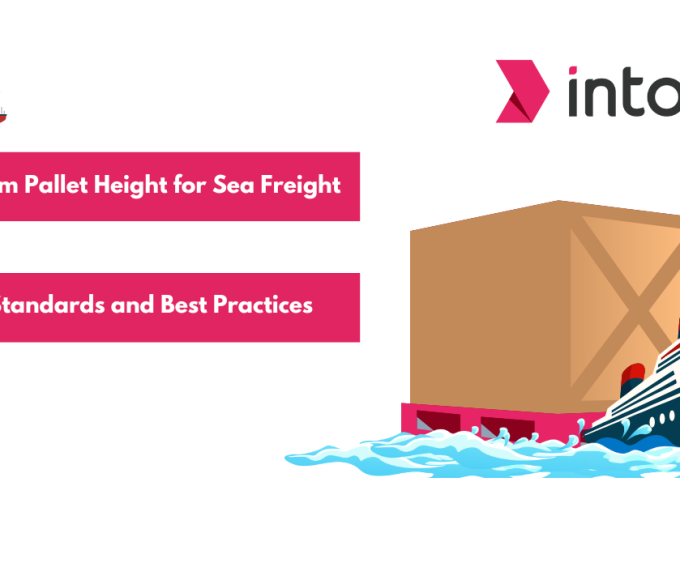
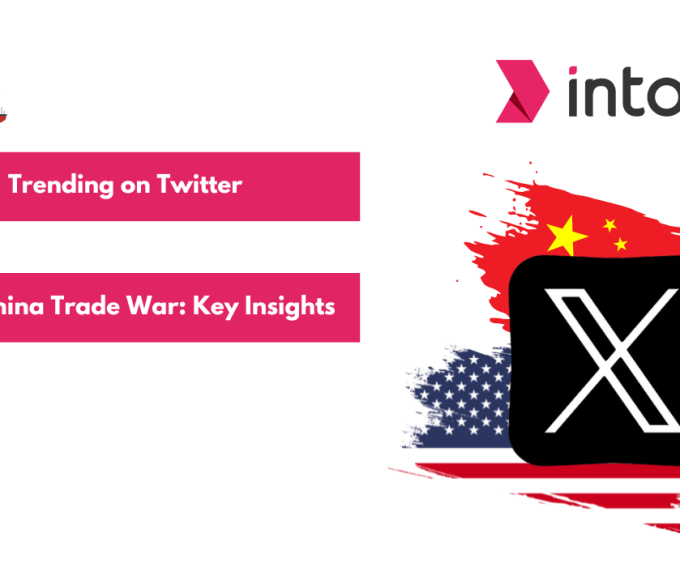
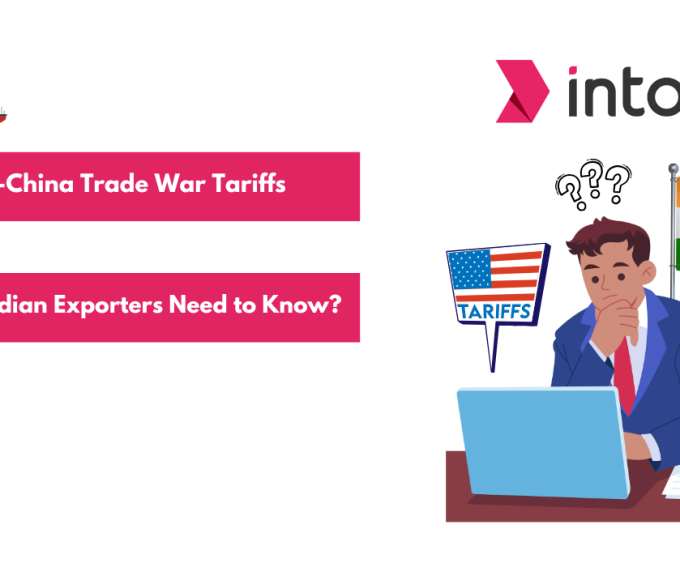
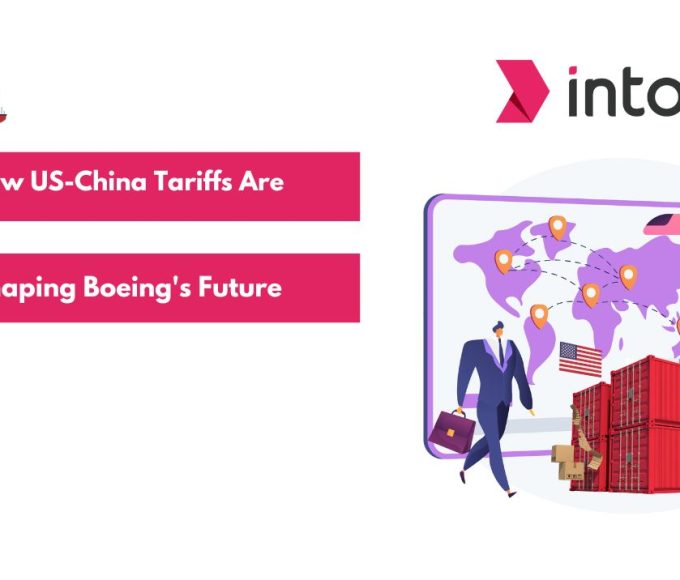
Leave a comment